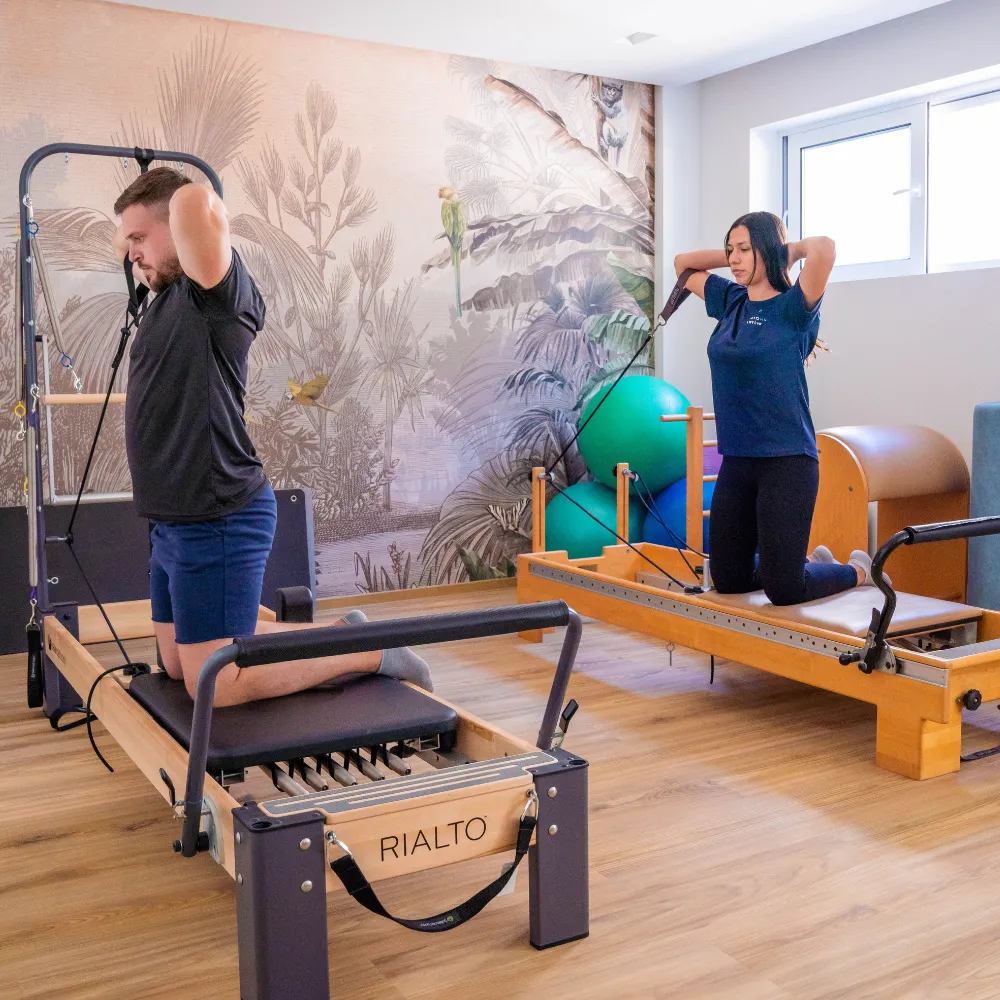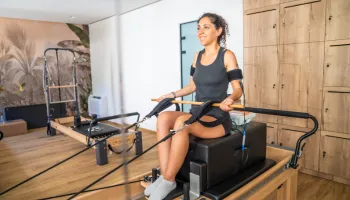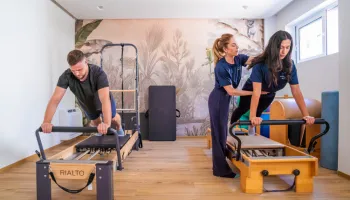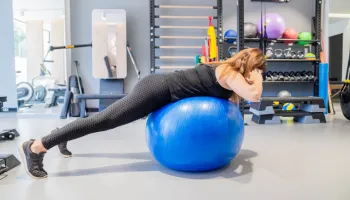Clinical Pilates
What is Clinical Pilates?
Clinical Pilates or clinical/therapeutic Pilates is a method of therapeutic exercise that aims at motor strengthening and facilitating recovery from musculoskeletal, neurological and chronic conditions or injuries. Furthermore, it is an excellent method for maintaining the therapeutic results of physiotherapy..
Through the use of Pilates machines and special equipment (Clinical Reformer), Clinical Clinical Pilates can be applied with omplete safety to people of any ageas well as regnant women, athletes or even cases where it is impossible to apply other therapeutic exercise programmes.
Through the use of Pilates machines and special equipment (Clinical Reformer), Clinical Clinical Pilates can be applied with omplete safety to people of any ageas well as regnant women, athletes or even cases where it is impossible to apply other therapeutic exercise programmes.
How is clinical Pilates different from classic Pilates?
Clinical Pilates exercises are based on the principles of traditional Pilates, are divided into levels/degrees of difficulty and aim at the overall and isometric training of the body.
Therapeutic Pilates is practiced only by certified therapists, who are able to differentiate and adapt the exercises, having first taken into account the pathology of the spine, the physiology and kinesiology of the body and, of course, the individual needs of each patient, before composing the individual treatment plan.
Given the above, Clinical Pilates at PHYSIO4U is practiced exclusively in personal or small groups (up to 3 persons).
Therapeutic Pilates is practiced only by certified therapists, who are able to differentiate and adapt the exercises, having first taken into account the pathology of the spine, the physiology and kinesiology of the body and, of course, the individual needs of each patient, before composing the individual treatment plan.
Given the above, Clinical Pilates at PHYSIO4U is practiced exclusively in personal or small groups (up to 3 persons).
What does Clinical Pilates include?
The main principles of therapeutic Pilates are the control and stabilisation of the body from the core or powerhouse, found in the lower abdomen. By strengthening the body, we improve its posture and correct the muscle mobility achieving the right centre of gravity, while each movement is done with consciousness, flow and is combined with proper breathing, in order to improve the overall physical condition.
At PHYSIO4U in Rethymno, Clinical Pilates s practiced on all Pilates machines and the specially designed Clinical Reformer® beds by Balanced Body.By using the right resistances and body weight, body shock is avoided and safe and gradual recovery from pain.
The therapeutic exercise of Clinical Pilates is often combined with other physiotherapy methods, such as manual therapy and acupuncture or other therapeutic exercise methods.The recommended ideal frequency for best results is at least 2 sessions per week, although this, of course, can be adjusted to suit the needs and schedule of each individual.
At PHYSIO4U in Rethymno, Clinical Pilates s practiced on all Pilates machines and the specially designed Clinical Reformer® beds by Balanced Body.By using the right resistances and body weight, body shock is avoided and safe and gradual recovery from pain.
The therapeutic exercise of Clinical Pilates is often combined with other physiotherapy methods, such as manual therapy and acupuncture or other therapeutic exercise methods.The recommended ideal frequency for best results is at least 2 sessions per week, although this, of course, can be adjusted to suit the needs and schedule of each individual.
What are the conditions for which Clinical Pilates is recommended?
As it is performed by specialised therapists, Clinical Pilates is an excellent recovery tool especially for spine injuries and symptoms, while it is recommended for almost all types of musculoskeletal problems.
The most common cases of application for Clinical Pilatesare:
• Back pain and/or Cervical syndrome
• Osteoporosis
• Weak pelvic floor muscles (Incontinence)
• Rheumatoid arthritis
• Kyphosis / Scoliosis / Lordosis
• Hip osteoarthritis
As well as:
• Treatment and prevention of sports injuries
• Post-operative Rehabilitation
• Pregnancy
• Recovery and maintenance of results after classic physiotherapy
The most common cases of application for Clinical Pilatesare:
• Back pain and/or Cervical syndrome
• Osteoporosis
• Weak pelvic floor muscles (Incontinence)
• Rheumatoid arthritis
• Kyphosis / Scoliosis / Lordosis
• Hip osteoarthritis
As well as:
• Treatment and prevention of sports injuries
• Post-operative Rehabilitation
• Pregnancy
• Recovery and maintenance of results after classic physiotherapy
As we proceed with our sessions, constantly collaborating and interacting with the patient, we continuously modify and enrich Clinical Pilates exercises. At the same time, patients become more aware of their body and acquire increasing control on their moves, balance, flexibility and breathing.
One of the greatest benefits of Clinical Pilates is the functional application of correct techniques even when the session is over. Our ultimate goal is to identify the source of musculoskeletal pain that restricts a person’s movement and functionality and to train them to recognise and correct incorrect motor patterns, skeletal deviations and muscle asymmetries, ultimately leading to a better quality of life.
One of the greatest benefits of Clinical Pilates is the functional application of correct techniques even when the session is over. Our ultimate goal is to identify the source of musculoskeletal pain that restricts a person’s movement and functionality and to train them to recognise and correct incorrect motor patterns, skeletal deviations and muscle asymmetries, ultimately leading to a better quality of life.
What you need to know regarding your first appointment
Save valuable time by coming prepared to your first appointment at the PHYSIO4U physiotherapy centre: bring everything that is necessary for us to start your case assessment right away!
Medication
Make a list of the medications you are taking and give this information to your physiotherapist during the assessment.
Recent tests
Make sure you have your most recent medical diagnosis with you, along with the results of any recent tests, such as x-rays, CT or MRI scans, etc.
Comfortable clothing
Wear comfortable clothes, especially in the area of the body that is affected or painful. This will allow the physiotherapist to better access that area and carry out the treatment most effectively. In addition, comfortable clothing will allow you to feel at ease and relaxed during the session.





